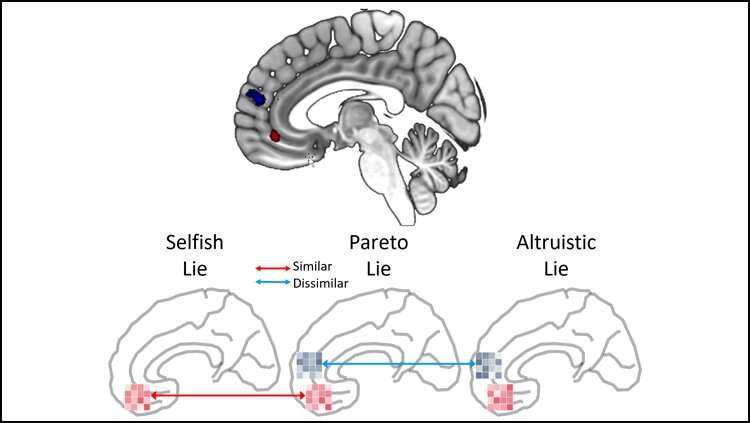
You may think a little white lie about a bad haircut is strictly for your friend’s benefit, but your brain activity says otherwise. Distinct activity patterns in the prefrontal cortex reveal when a white lie has selfish motives, according to new research published in JNeurosci.
White lies—formally called Pareto lies—can benefit both parties, but their true motives are encoded by the medial prefrontal cortex (MPFC). This brain region computes the value of different social behaviors, with some subregions focusing on internal motivations and others on external ones. Kim and Kim predicted activity patterns in these subregions could elucidate the true motive behind white lies.
The research team deployed a stand in for white lies, having participants tell lies to earn a reward for themselves, for an unknown person, or for both. The team used fMRI to measure the MPFC activity of participants and, by comparing the brain activity of white lies with the selfish and altruistic lies, they could predict the true motivation for the lies. Selfish white lies elicited greater activity in the ventral and rostral MPFC. Activity patterns in the ventral subregion was similar to that of selfish lies, while activity patterns in the rostral subregion was dissimilar to altruistic lies.
Society for Neuroscience

